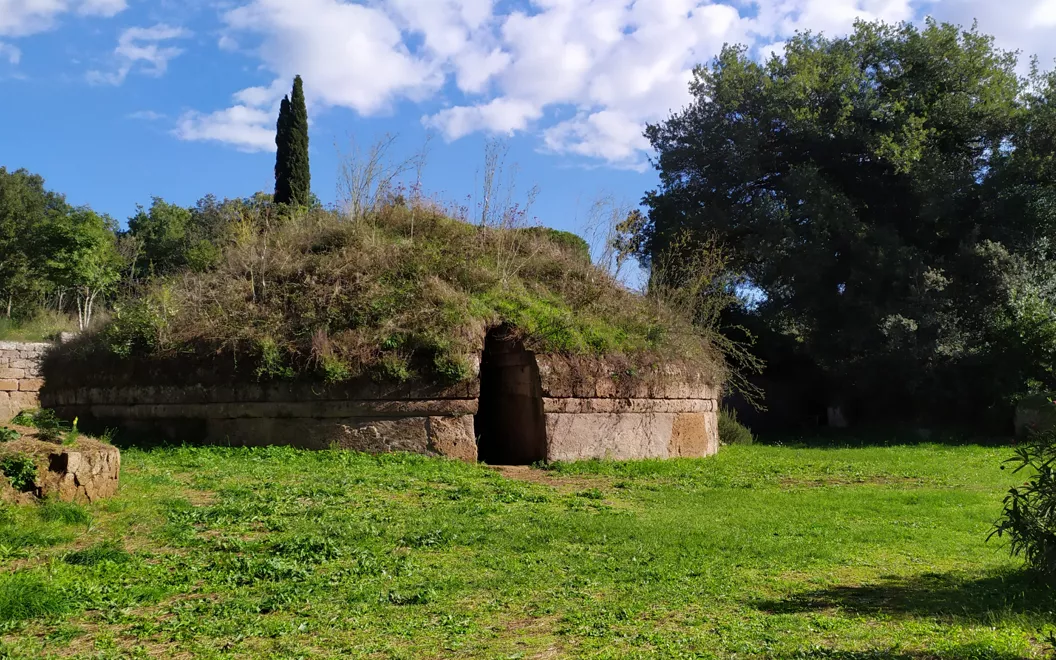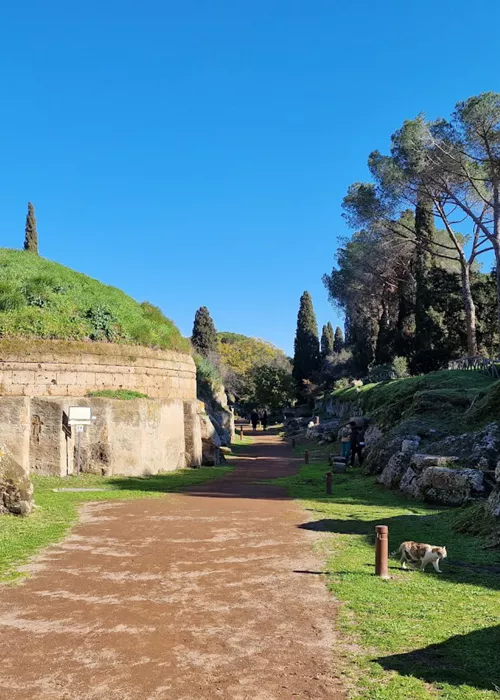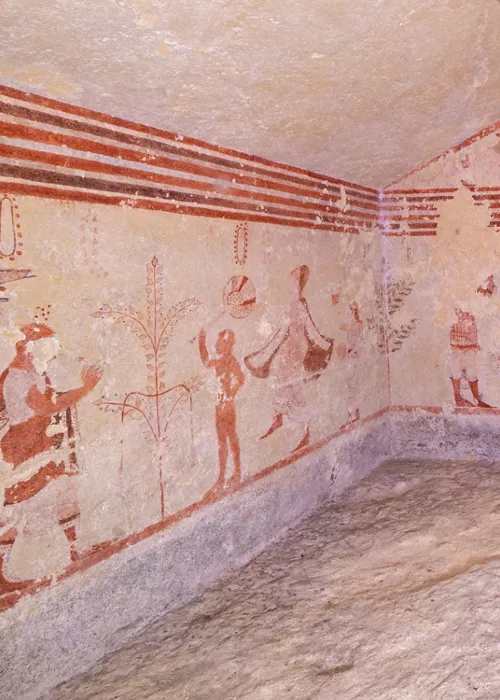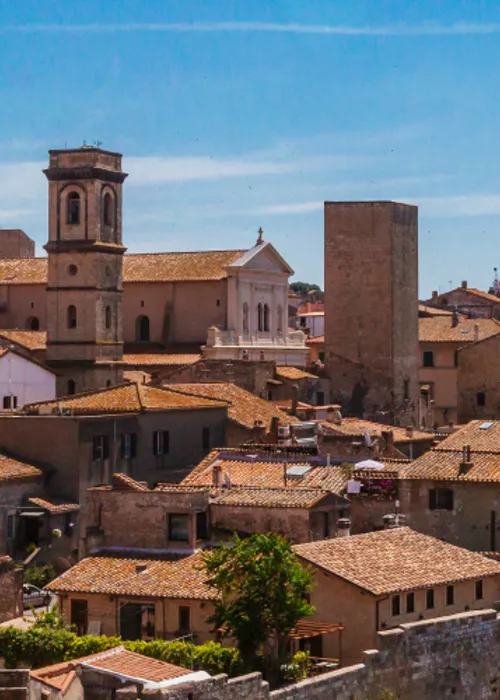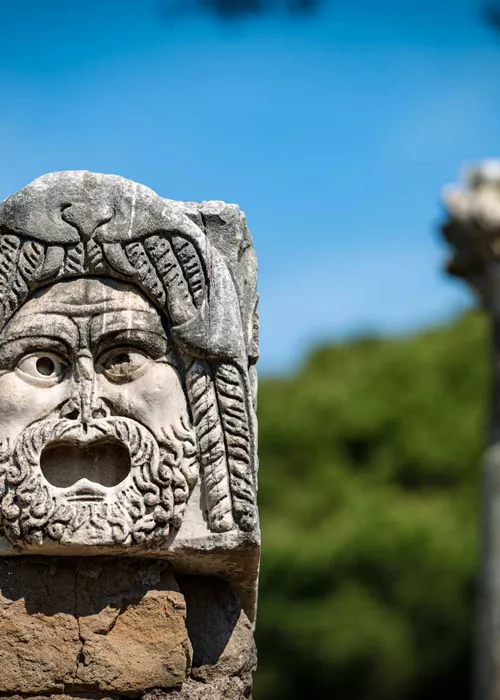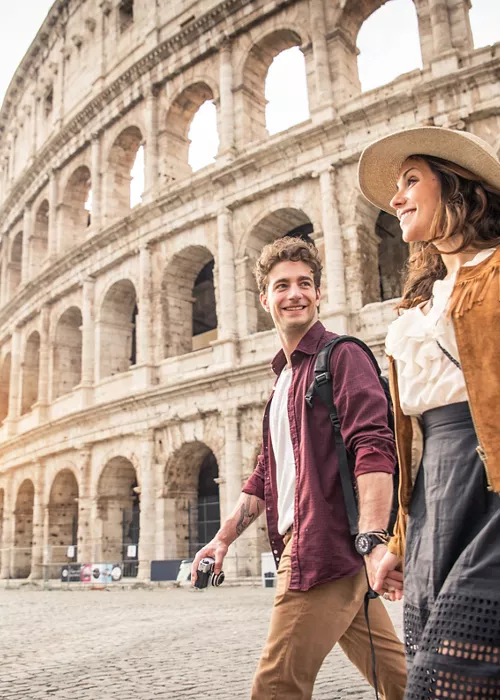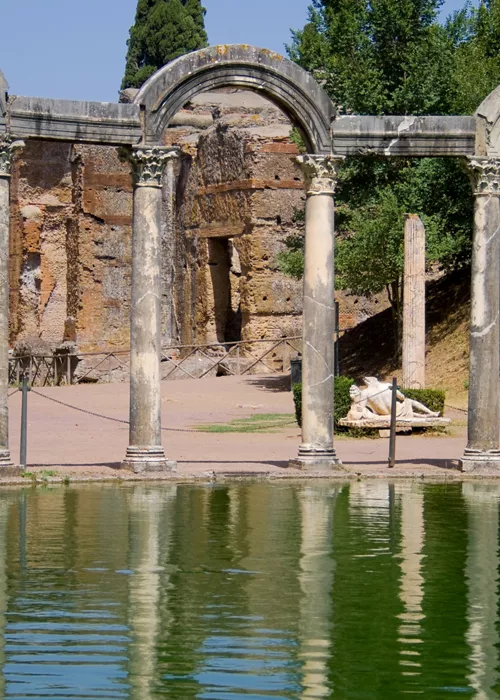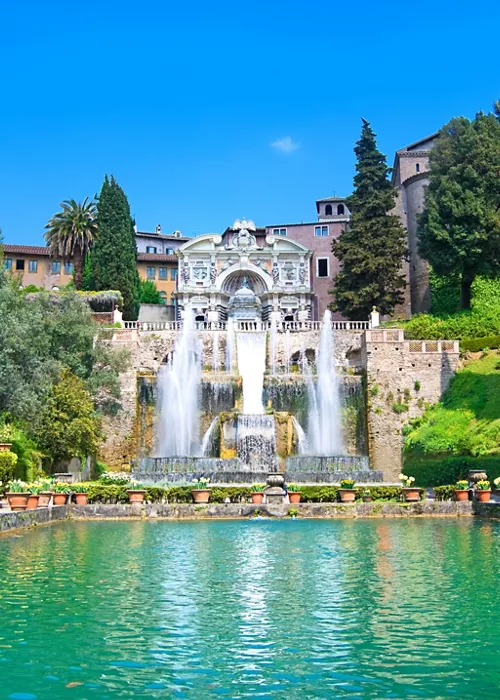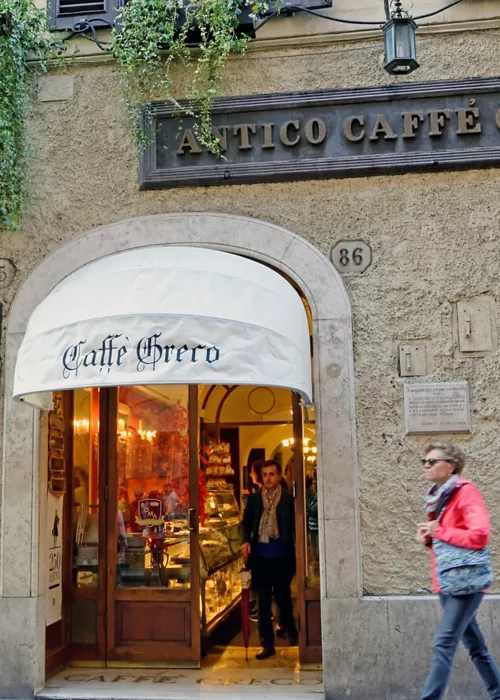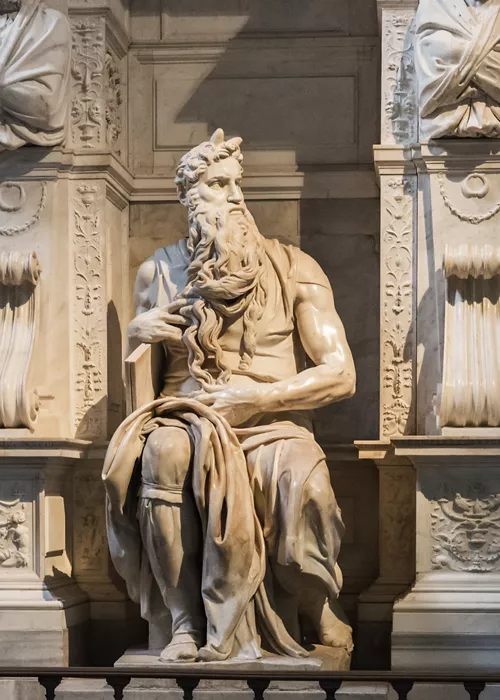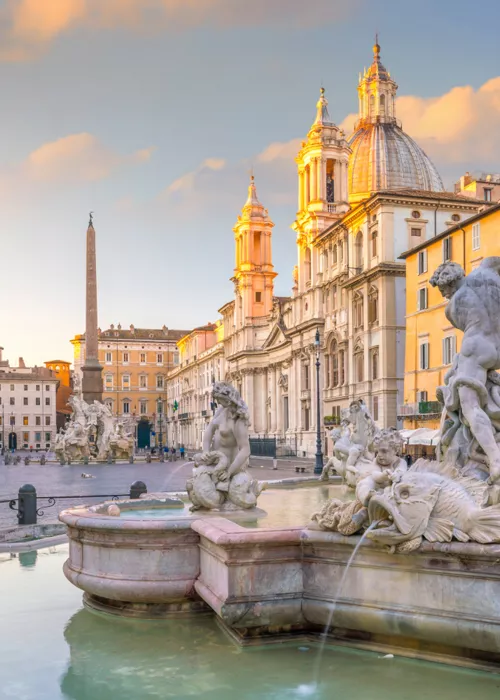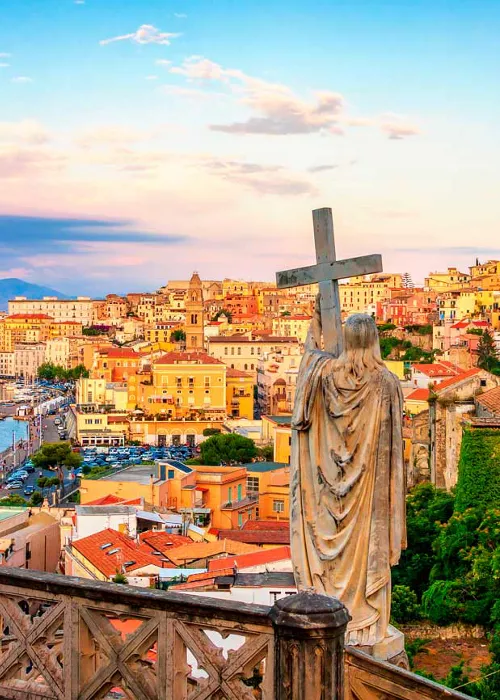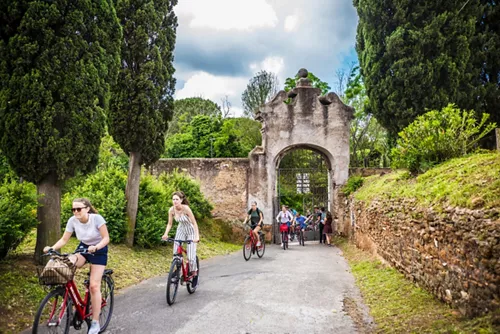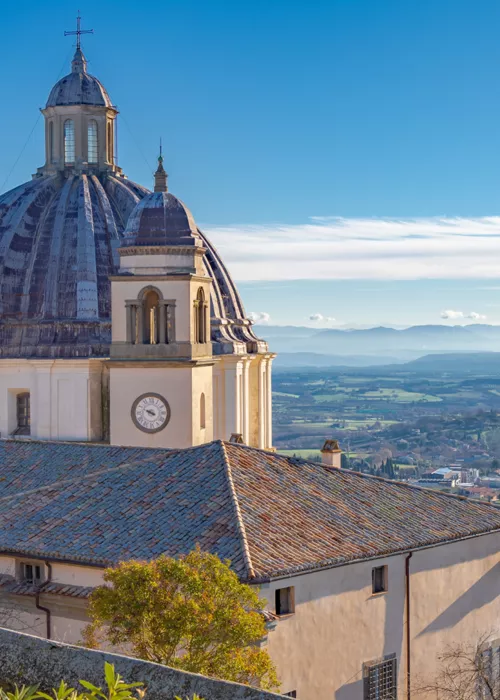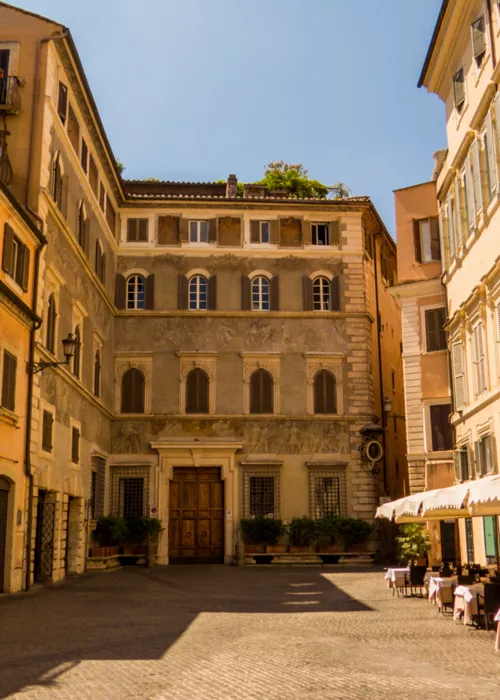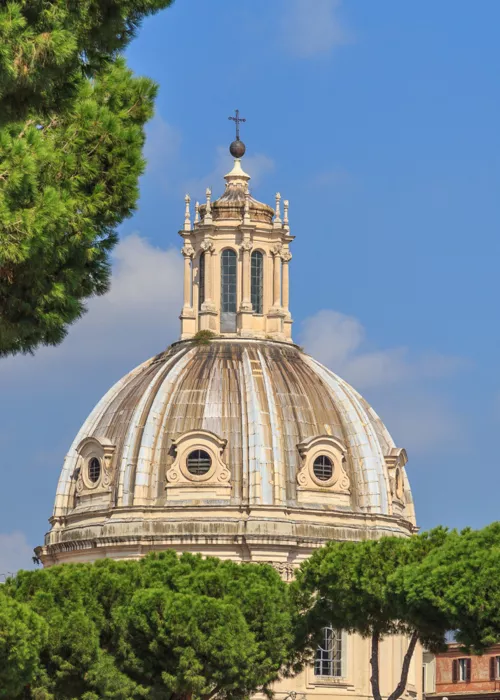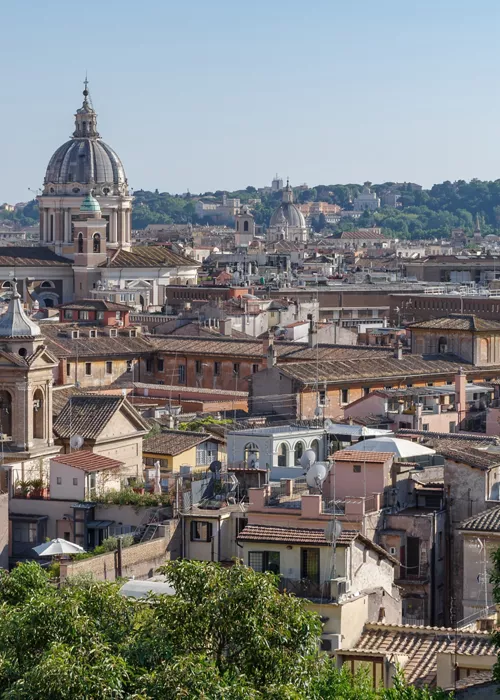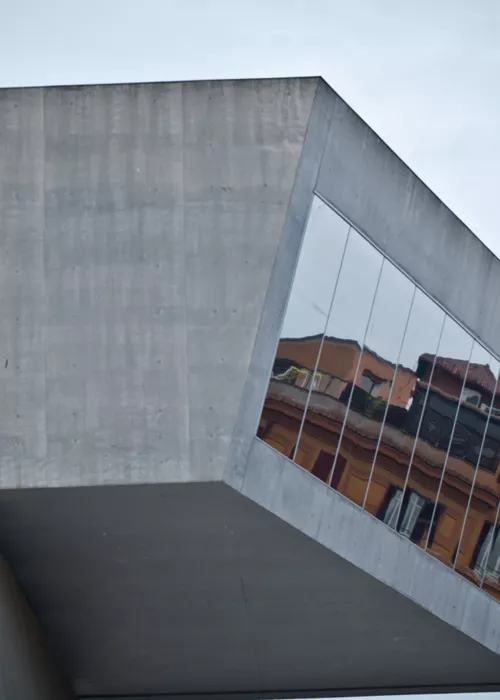The Necropolises of Tarquinia and Cerveteri
3 minutes
If you want to step back in time and admire the splendour of Italy's only pre-Roman urban civilisation, Cerveteri and Tarquinia are most definitely for you.
What are the necropolises of Tarquinia and Cerveteri and where are they located?
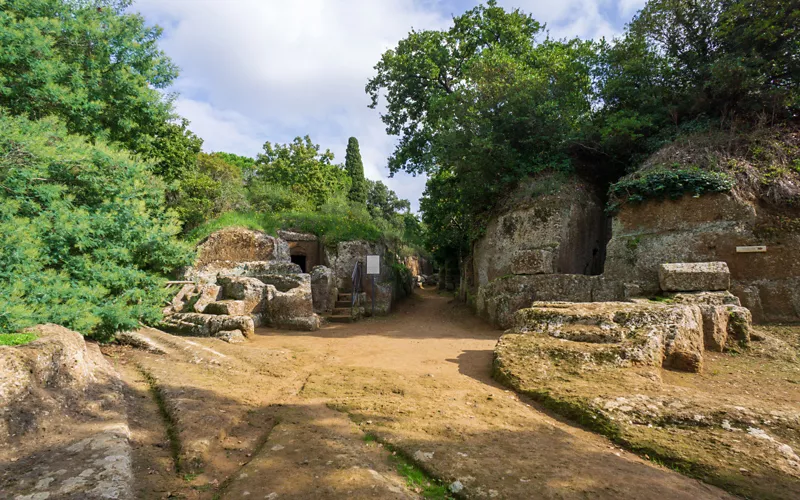
Located in northern Lazio, near the Tyrrhenian coast, these two necropolises, rich in Etruscan frescoes, faithfully reproduce the daily life of this culture long-since lost to time.
You can reach the necropolis of Banditaccia in Cerveteri, the closest to the capital, by train from Rome in less than an hour. A little further north is the necropolis of Monterozzi in Tarquinia, world-famous for its painted tombs carved into the rock, accessible via steep corridors or steps.
History and information on the necropolises of Tarquinia and Cerveteri
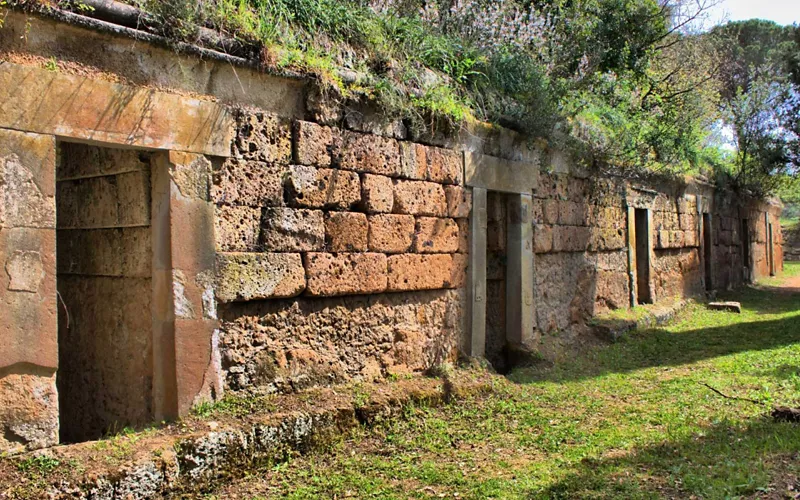
The Etruscan civilisation lived in central-western Italy, between Lazio and Tuscany, from the 9th century BC. After reaching the height of its territory in the 6th century BC, this culture disappeared, partly merging with the Roman civilisation that began to expand out from Rome. Today, these two sites in Lazio have left us a unique insight into the funeral rites of the Etruscan people, with thousands of Etruscan tombs dating back to different centuries, from hut-shaped tombs to underground tombs dug into the rock or set in natural caves.
Why they became a UNESCO site
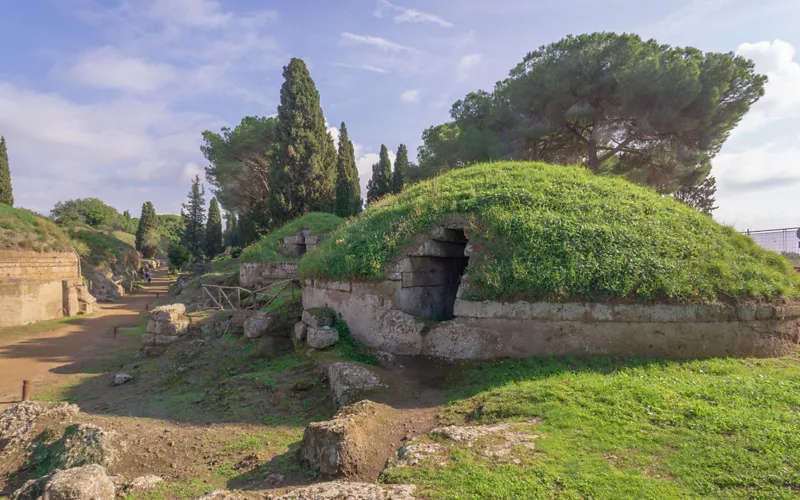
UNESCO added these two necropolises to the World Heritage List in 2004 in recognition of their masterful testimony to the creative human genius of the Etruscans.
The archaeological site of Cerveteri reveals the same urban and architectural funerary context as the Etruscan cities. The Tarquinia site, on the other hand, shows us aspects of the life, death and religious beliefs of the Etruscan civilisation through the extensive paintings decorating the thousands of tombs.
What to see at the necropolises of Tarquinia and Cerveteri
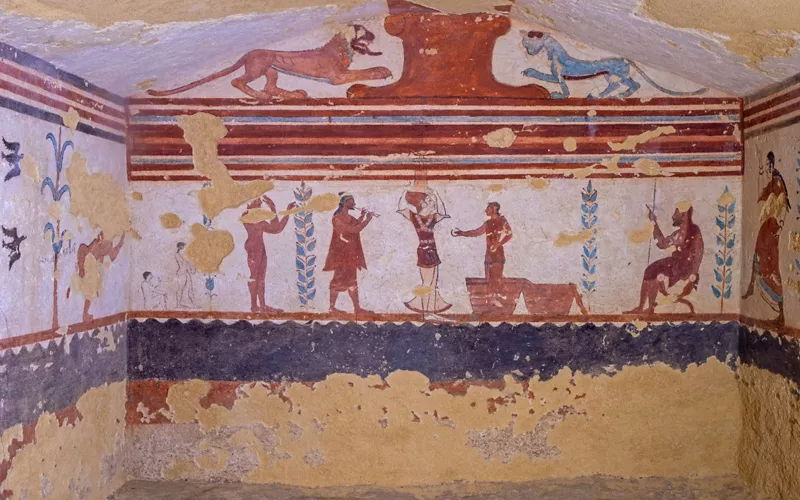
We recommend starting your visit at what is considered to be one of the most interesting and evocative archaeological areas in the Mediterranean – the necropolis of Banditaccia in Cerveteri.
Developed from the 9th century BC and expanded from the 7th century BC onwards, this 20-hectare necropolis in Cerveteri is laid out like a real Etruscan city, with streets, small squares and small quarters. You get a real sense of the passage of the centuries when walking among the different types of tombs scattered around the site: trenches dug into the rock, burial mounds encompassing multiple tombs, and highly detailed tombs in the shape of huts or small houses.
The Tomb of the Capitals, for example, features a flat roof, faithfully reproducing the wooden beams and thatch structure used in the homes of the living. The Tomb of the Greek Vases, dating back to the 6th century BC and named after the great number of vases it houses, consists of three burial chambers, accessible through a corridor that imitates an Etruscan temple.
The most popular, however, is the Tomb of the Reliefs, which is sure to leave you speechless. Dating back to the 4th century and belonging to a wealthy Etruscan family, this tomb is accessible via a long flight of steps carved into the rock. Six metres long, the Tomb of the Reliefs houses 13 funeral niches with double cushions with red painted stucco, household objects and animals.
Much larger, and different in many respects, is the necropolis of Monterozzi in Tarquinia. This is the largest-known complex, with more than 6,000 rock-cut tombs across 130 hectares. The jewel of the huge site, however, has to be the 200 painted tombs that represent the only existing evidence of pre-Roman classical art in the Mediterranean basin. Among them, there are two that you cannot miss.
The Tomb of the Lionesses, dating back to the 4th century, is decorated with a painting depicting flying birds and leaping dolphins, in scenes portraying the life of the Etruscan aristocracy. It is named after the two spotted lionesses painted on the gable of the back wall. Older still is the Tomb of Hunting and Fishing, which dates back to the 6th century BC and consists of two chambers decorated with images of hunting and fishing and portraits of the tomb’s owners.
However, walking around the necropolis is not the only thing Tarquinia has to offer. The city is home to the National Archaeological Museum, with its rich collection of artefacts recovered during excavations, including ceramics, coins, frescoes, decorations and sarcophagi belonging to some of the most prominent families of Tarquinia in the mid-4th century BC. Many other artefacts found in the tombs of Tarquinia and Cerveteri are preserved at the National Etruscan Museum in Rome.

